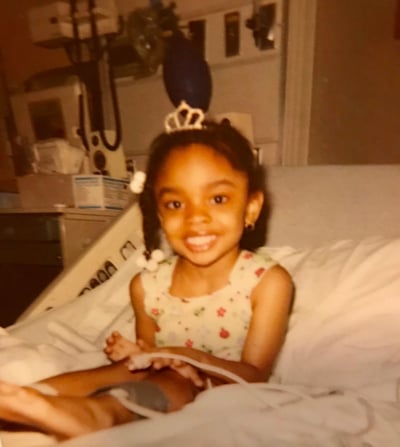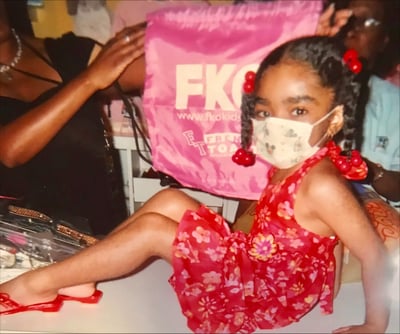 Mychaela Lovelace is a sophomore at Michigan State University majoring in kinesiology in the College of Education, and is a scholar and mentor in the Dow STEM Scholars Program.
Mychaela Lovelace is a sophomore at Michigan State University majoring in kinesiology in the College of Education, and is a scholar and mentor in the Dow STEM Scholars Program.On April 1, 2008, at the age of 5 I was diagnosed with severe aplastic anemia, which is a rare condition that occurs when your body stops producing enough new blood cells. About two in every, 1 million people in the United States are diagnosed with the disease each year.
After being diagnosed, I knew, even at the young age of 5, that I was going to have to put up a fight if I was going to beat this disease.
After numerous transfusions, surgeries and being in intensive care units and almost dying, doctors at Beaumont Hospital said there was nothing else that they could do for me and that I needed a bone marrow transplant.
My family checked to see if they were a match for me. No one was a match.
 Only about 30% of patients find a fully matched donor within their family, so most people in need of a bone marrow transplant are matched through a registry. Yet, the genetic markers used to match patients and donors are inherited, so patients are most likely to match with someone who shares their ethnic background.
Only about 30% of patients find a fully matched donor within their family, so most people in need of a bone marrow transplant are matched through a registry. Yet, the genetic markers used to match patients and donors are inherited, so patients are most likely to match with someone who shares their ethnic background. An entire year went by of waiting for a donor, and then, my family received a call from the hospital saying they found a perfect match — 10 out of 10.
On March 18, 2009, after receiving chemotherapy and radiation, I received my transplant. I am one of the lucky few African Americans to receive a donor match.
Bone marrow registries lack donor diversity making it harder for patients of color to receive life-saving treatment. For example, the odds of a Black person finding a matched donor is 29%, while a white person has a 79% chance. Increasing the diversity of the donor pool is critical to saving more lives.
 My donor told me that when he was 19 years old on a college campus, he signed up to become a donor. Then years later when he was in his 30s, he received a call saying he was a match to me.
My donor told me that when he was 19 years old on a college campus, he signed up to become a donor. Then years later when he was in his 30s, he received a call saying he was a match to me. On Friday, March 18, Be the Match, the world’s most diverse bone marrow registry, will be hosting an event on MSU’s campus to celebrate my 13th year of remission. I look forward to sharing my story with other Spartans and so that they can learn how donor diversity can save lives.
I hope that this event educates our MSU community about aplastic anemia and the importance of donors of color registering.
With the support of the Dow STEM Scholars Program, Be The Match will be hosting a registry on campus on Friday, March 18, 10:30 a.m. – 2:30 p.m. ET in Brody Hall.